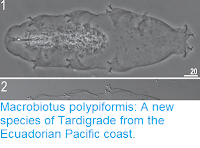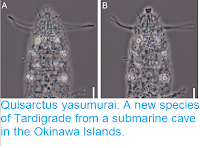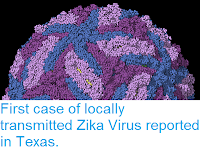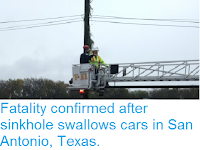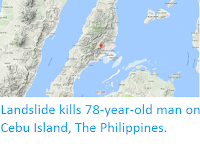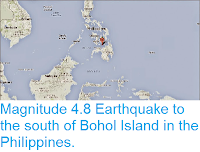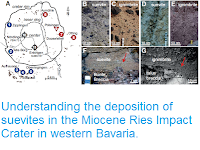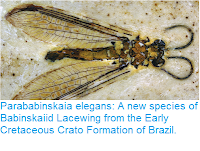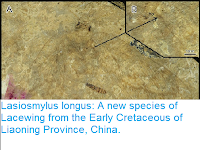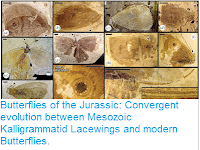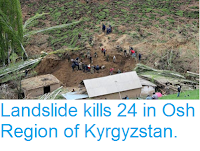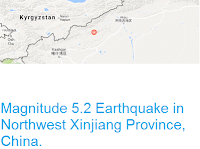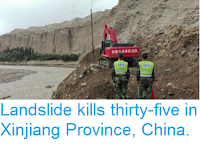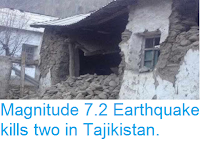Tardigrades, or Water Bears, are a distinctive group of small (usually
less than 1 mm) invertebrates related to Arthropods, Nematodes and
Velvet Worms. They have a simple segmented body with four pairs of
limbs, and are remarkably resilient to environmental stress, being able
to withstand extremely high and low temperatures, complete desiccation
and even exposure to vacuum. To date about 1200 species of Tardigrade
have been described, from marine, freshwater and terrestrial
environments. Of these, less than 250 have been described from South America,
the majority of these from Chile, Argentina and Brazil.
In a paper published in the journal ZooKeys on 27 September 2017, Oscar Lisi of the Grupo de Investigación MIKU at the Universidad del Magdalena, and the Dipartimento di Scienze Biologiche, Geologiche e Ambientali at the Università di Catania, Anisbeth Daza and Rosana Londoño, also of the Grupo de Investigación MIKU at the Universidad del Magdalena, and Sigmer Quiroga of the Programa de Biología at the Universidad del Magdalena, describe a new species of Tardegrade from the Sierra Nevada de Santa Marta Mountains of Colombia.
The new species is placed in the genus Bryodelphax, and given the specific name kristenseni, in honour of Reinhardt Møbjerg Kristensen, of the Natural History Museum of Denmark and University of Copenhagen, for his work on Tardigrade taxonomy. The species is described from eleven specimens collected from Lichen, Moss and Liverworts at two locations in the Sierra Nevada de Santa Marta Mountains. These range from 106 to 131 μm in length, are apparently eyeless and covered in armoured plates.
Drawings of the dorsal (A) and ventral (B) plates arrangement of Bryodelphax kristenseni. Lisi et al. (2017).
See also...
Follow Sciency Thoughts on
Facebook.



